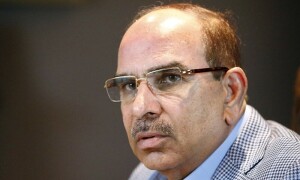THE IMF’s refusal to relax its demand for discontinuation of massively subsidised gas supplies to mostly inefficient captive power plants owned by wealthy textile producers, in order to eliminate cost distortions between power supply from the national grid and in-house generation, is understandable. Where power supply is a problem, captive power producers would be asked to pay additional Rs1,700-1,800 per mmBtu on top of prevailing LNG prices to strip them of the cost benefits of in-house generation. The condition, one of the key structural benchmarks of the ongoing $7bn funding programme, is aimed at compelling the government to wean the industry off energy subsidies, and encourage factory owners to shift to the national grid to stem falling power production — a major reason for soaring capacity payments to IPPs and unaffordable consumer tariffs. The electricity price subsidies for the industry have mostly been withdrawn under IMF oversight.
On the face of it, the condition appears harsh for exporters, as it would somewhat raise the cost of textile exports. But it isn’t. Generous energy and other subsidies doled out to textile exporters over the past several decades have made them inefficient, preventing product diversification and value-addition. Once they are weaned off subsidies, we may see some inefficient industries close down, with others investing in new technologies to stay competitive in the international markets. This action will also give small and medium textile exporters, who can’t afford captive power to slash their production costs, a fair chance to compete with the large producers in the market and grow bigger. It should also help divert gas to the much more efficient RLNG-based power generation plants, reducing the burden of growing capacity payments on the national exchequer and consumers. Indeed, the gas utilities have concerns about the drop in their sales amidst “250 surplus LNG cargoes” that Pakistan must procure under long-term contracts with suppliers. The concerns aren’t totally misplaced, but the growth in demand from the on-grid power sector is expected to significantly offset the gas companies’ projections of losses due to the decrease in demand from the captive power sector. No doubt, it’s a complex situation where stabilisation of one segment of the energy sector is affecting the other. Yet these challenges need to be confronted head-on, sooner rather than later.
Published in Dawn, January 7th, 2025












































Dear visitor, the comments section is undergoing an overhaul and will return soon.